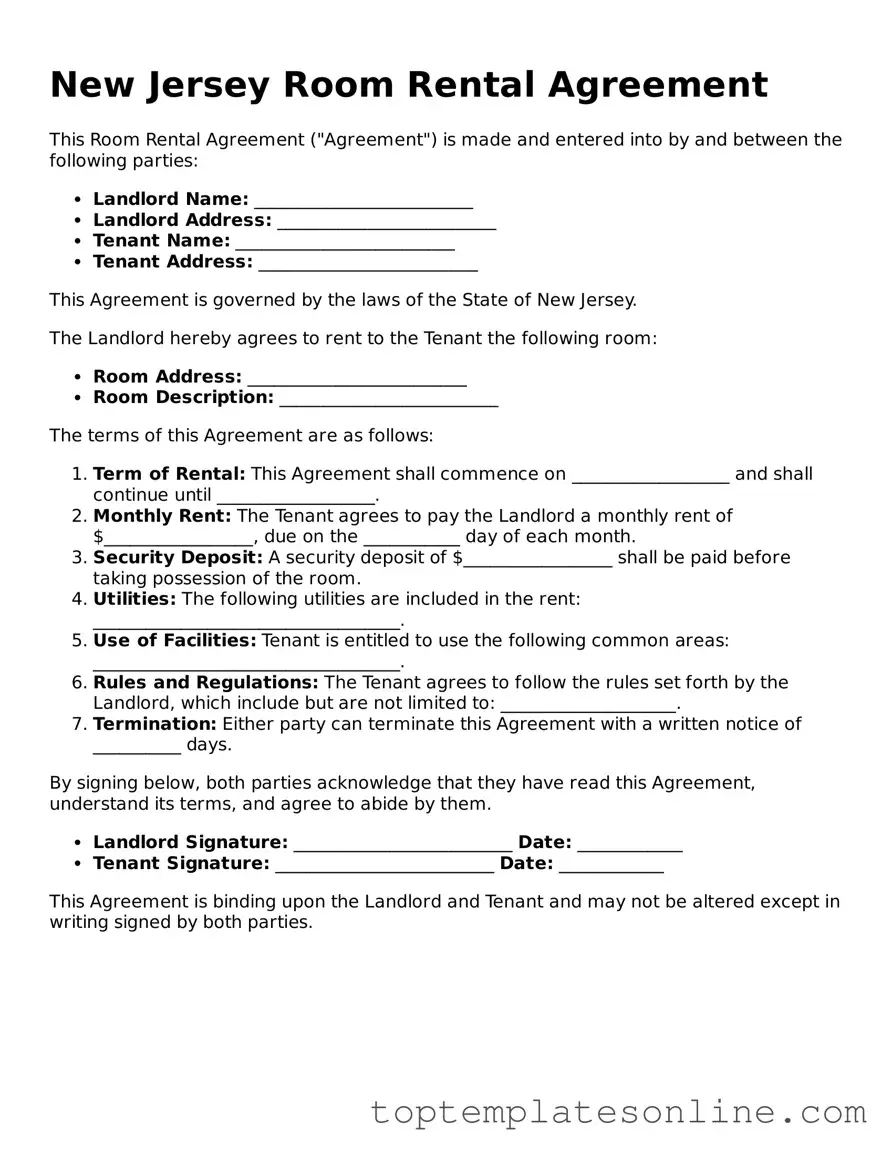Blank Room Rental Agreement Template for New Jersey State
The New Jersey Room Rental Agreement is a legal document that outlines the terms and conditions between a landlord and a tenant for renting a room. This agreement helps protect the rights of both parties and ensures clear communication regarding rental terms. Understanding this form is essential for anyone looking to rent or lease a room in New Jersey.
Customize Room Rental Agreement Here
